Satyr ransomware (Recovery Instructions Included) - Removal Guide
Satyr virus Removal Guide
What is Satyr ransomware?
Satyr ransomware is a new cyberthreat discovered by security experts in April
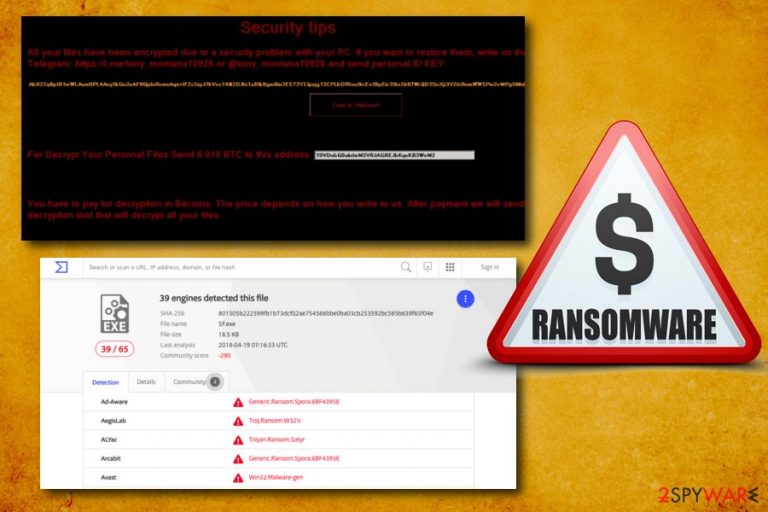
Satyr ransomware is a crypto-virus that encrypts all user files using AES[1] and RSA-2048 encryption algorithm and appends .Satyr appendix to each of the files. This process makes data unusable, and until the ransom of 0.018 BTC is paid, the hackers will not disclose decryption key to the victim. The virus uses the same file – SF.exe – as Spartacus ransomware.
| SUMMARY | |
| Name | Satyr ransomware |
|---|---|
| Type | File locking virus |
| Extension | .Satyr |
| Cipher used | AES and RSA-2048 |
| Ransom size | 0.018 BTC |
| Contact | https://t.me/tony_montana10928 or @tony_montana10928 |
| Distribution | Spam emails, infected installers, malicious links, etc. |
| Elimination | Download and install FortectIntego or Malwarebytes |
The malware enters users’ machines through malicious sites, links, infected downloads or spam emails. However, ransomware does not instantaneously lock up files. First, Satyr virus executes a chain of specific changes to system configuration to ensure that the malicious program loads with every computer boot up.
Then, the crypto-locker scans the computer for files (it can be any personal files, like video, music, PDF, text and other) that can be encrypted and executes the process by appending .Satyr extension. For example, the file that used to be called picture.jpg turns into picture.jpg.Satyr.
The virus also typically protects itself by disabling security software. Thus, users are recommended entering Safe Mode with Networking. From there, users should start up a reliable security tool (such as FortectIntego, SpyHunter 5Combo Cleaner or Malwarebytes) and then proceed with Satyr removal.
As soon as ransomware completes its data encryption process, it drops a ransom note that explains to the user what happened:
Security tips
All your files have been encrypted due to a security problem with your PC. If you want to restore them, write us the Telegram: https://t.me/tony_montana10928 or @tony_montana10928 and send personal ID KEY: <…>
For Decrypt Your Personal Files Send 0.018 BTC to this address: <…>
You have to pay for decryption in Bitcoins. The price depends on how you write us. After payment we will send you decryption tool that will decrypt all your files
As evident, Satyr authors want victims to contact them via Telegram messenger after the payment of 0.018 BTC (around $147.5 at the time of writing) is processed. However, we do not recommend contacting hackers.
Cybercrooks are promising to send the decryption tool, but nobody guarantees that the file is not malware. This way, you could compromise your computer even more. What is more, if you show that ransom demands can be successful, hackers will create more viruses to extract more money out of innocent users.
Instead, you should remove Satyr ransomware and then proceed with file recovery procedure. Unfortunately, the only secure way to get data back is by recovering it for a remote server – like iCloud or Google Drive or from an external storage device. If you do not possess any back-ups, you can try alternative file recovery methods which we describe below this article.
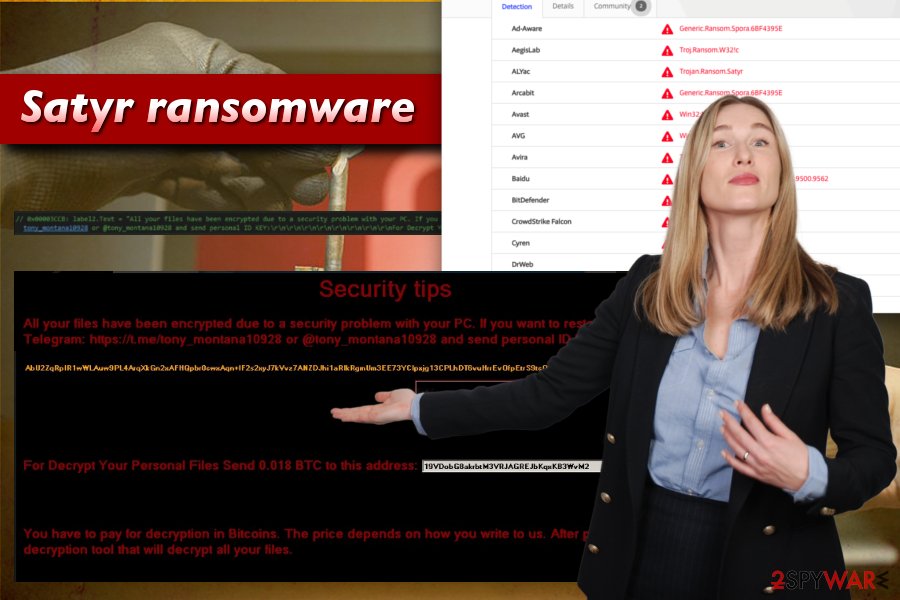
Be careful when opening emails as they can contain the deadly ransomware payload
Security researchers[2] noted that the most prevalent ransomware distribution method is via spam emails. Thus, users should be careful when handling new emails coming from unknown sources:
- Do not open emails carelessly, even if they seem legitimate;
- Do not open any attachments in the email. The contaminated file typically asks to enable macro function;[3]
- Do not ignore the built-in security software warnings about phishing emails;
- Check the address the email was sent from to make sure it is legitimate;
- Do not click on any links inside the email. Keep in mind that hyperlinks enable hackers to disguise a malicious site inside the link.
Another dangerous place on the internet is all suspicious websites, including illegal software, pornographic, free online gaming, gambling and similar high-risk sites. Thus, stay away from them and close your browser if you get redirected.
Remove Satyr ransomware and recover your files
Ransomware infection is a serious threat and should not be taken lightly. Thus, do not try to remove Satyr virus manually. Not only you will fail to get rid of the malware but might also damage system files beyond repair.
Therefore, you should download and install reputable anti-malware software and start it in the Safe Mode with Networking. Then, scan your computer for full Satyr removal.
Getting rid of Satyr virus. Follow these steps
Manual removal using Safe Mode
As we already mentioned, Satyr virus might prevent security software to start properly. Thus, reboot your PC in Safe Mode with Networking:
Important! →
Manual removal guide might be too complicated for regular computer users. It requires advanced IT knowledge to be performed correctly (if vital system files are removed or damaged, it might result in full Windows compromise), and it also might take hours to complete. Therefore, we highly advise using the automatic method provided above instead.
Step 1. Access Safe Mode with Networking
Manual malware removal should be best performed in the Safe Mode environment.
Windows 7 / Vista / XP
- Click Start > Shutdown > Restart > OK.
- When your computer becomes active, start pressing F8 button (if that does not work, try F2, F12, Del, etc. – it all depends on your motherboard model) multiple times until you see the Advanced Boot Options window.
- Select Safe Mode with Networking from the list.
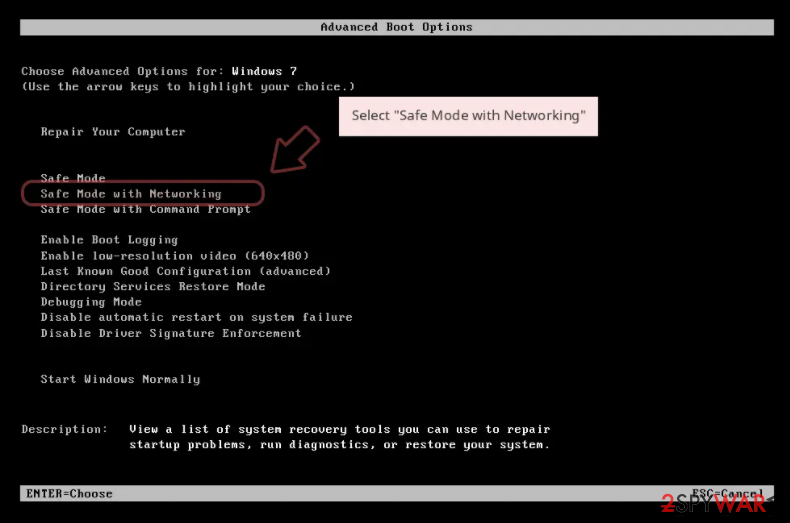
Windows 10 / Windows 8
- Right-click on Start button and select Settings.
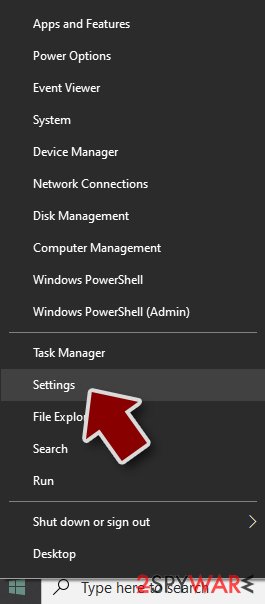
- Scroll down to pick Update & Security.
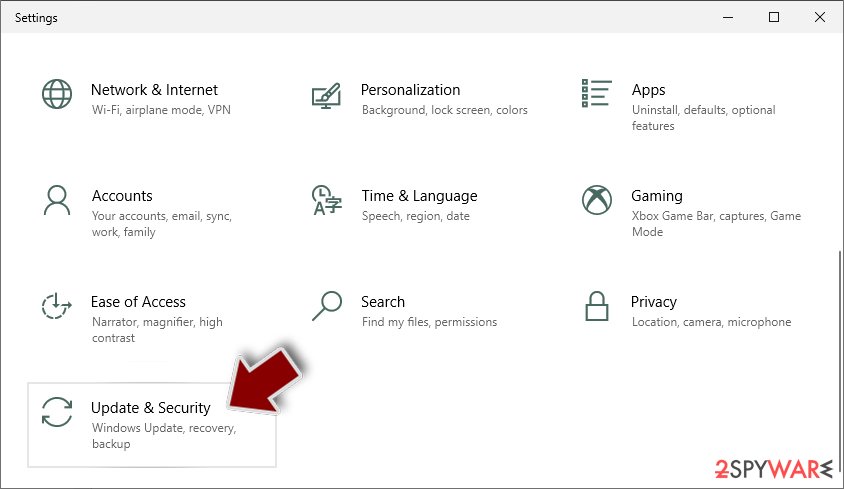
- On the left side of the window, pick Recovery.
- Now scroll down to find Advanced Startup section.
- Click Restart now.
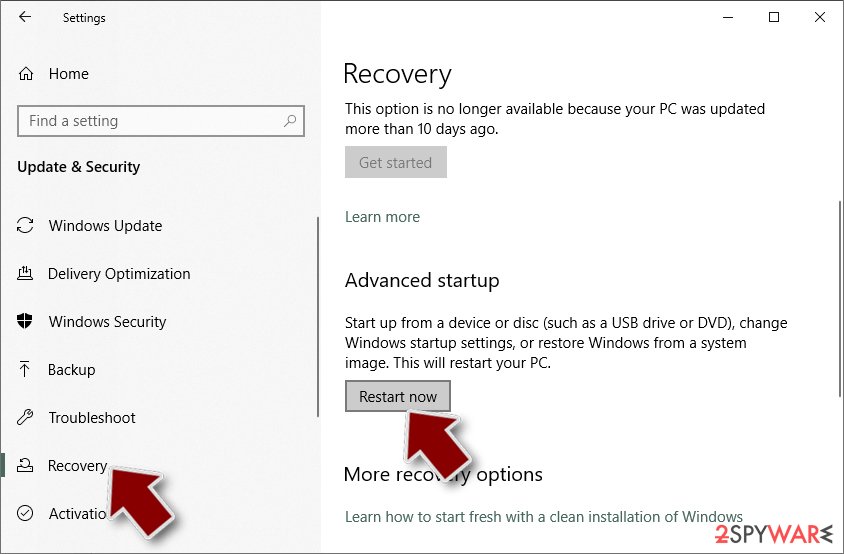
- Select Troubleshoot.
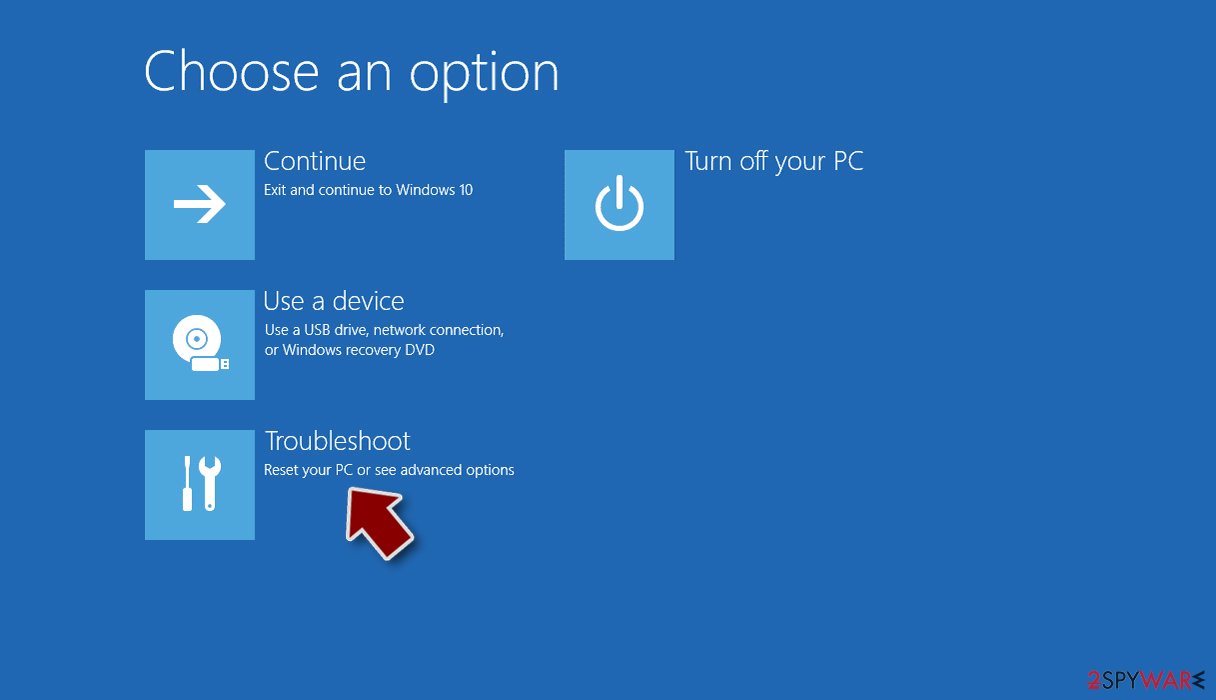
- Go to Advanced options.

- Select Startup Settings.
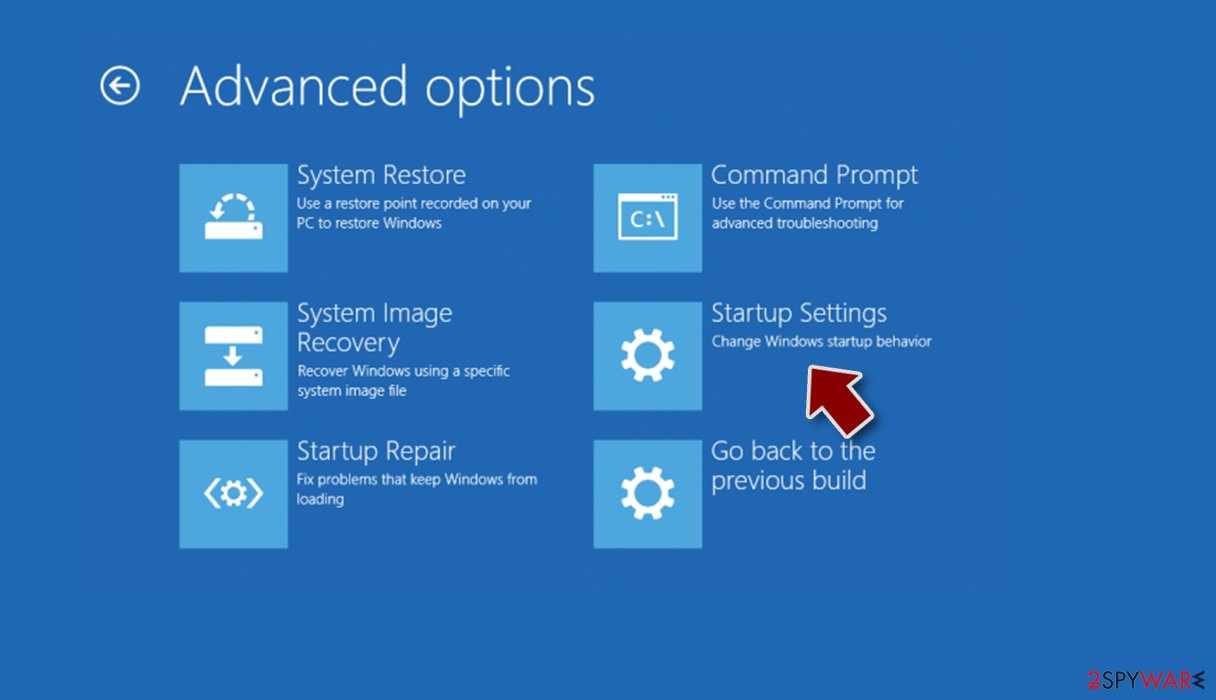
- Press Restart.
- Now press 5 or click 5) Enable Safe Mode with Networking.
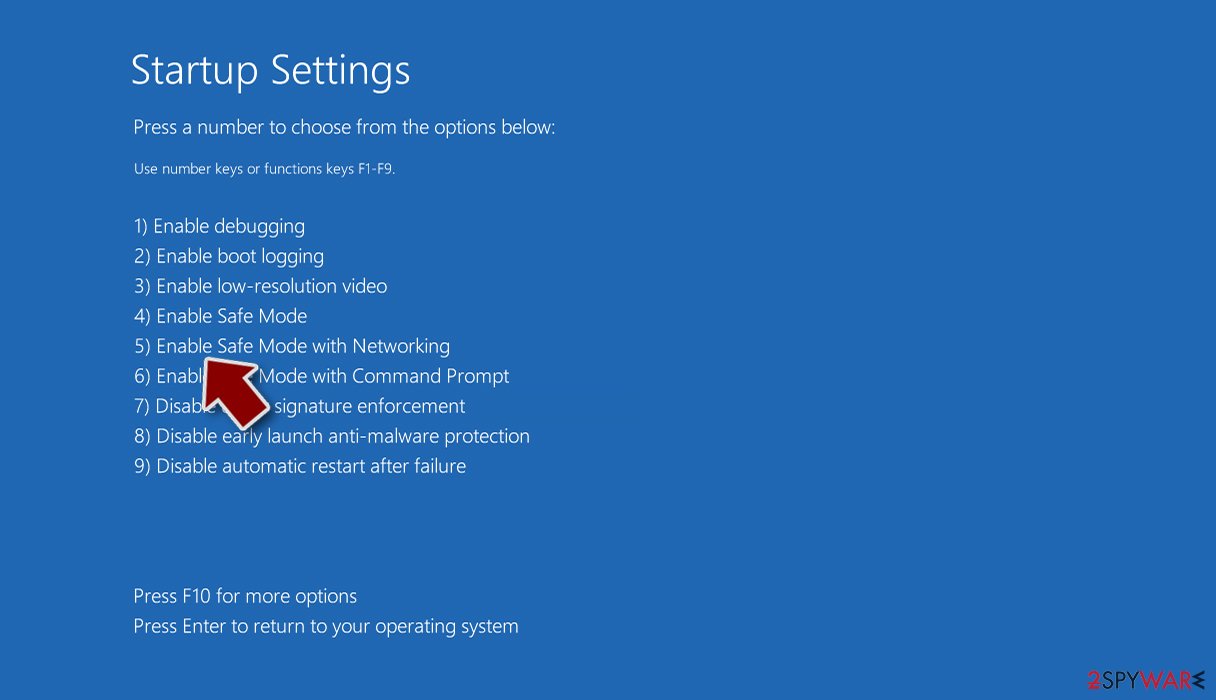
Step 2. Shut down suspicious processes
Windows Task Manager is a useful tool that shows all the processes running in the background. If malware is running a process, you need to shut it down:
- Press Ctrl + Shift + Esc on your keyboard to open Windows Task Manager.
- Click on More details.
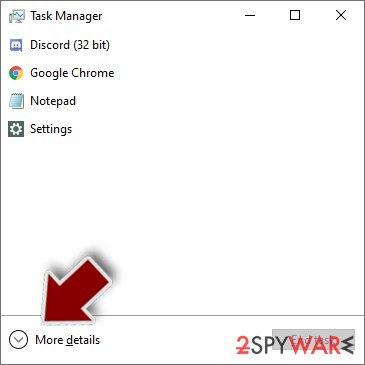
- Scroll down to Background processes section, and look for anything suspicious.
- Right-click and select Open file location.
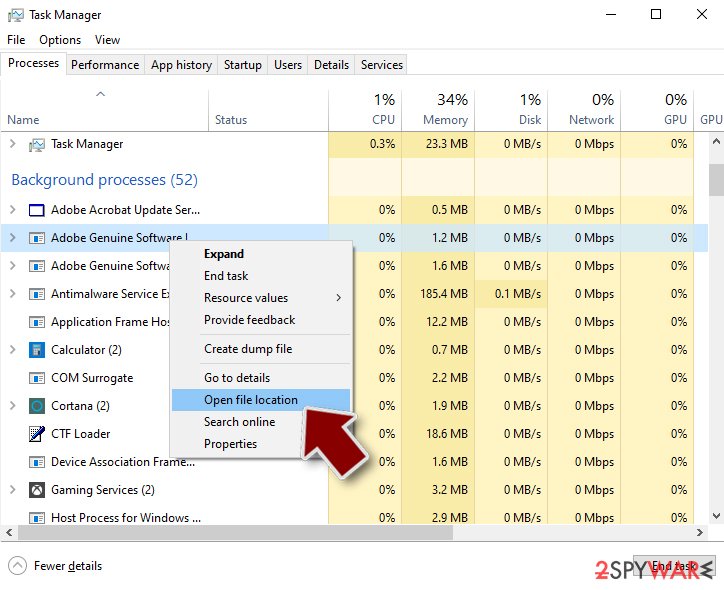
- Go back to the process, right-click and pick End Task.
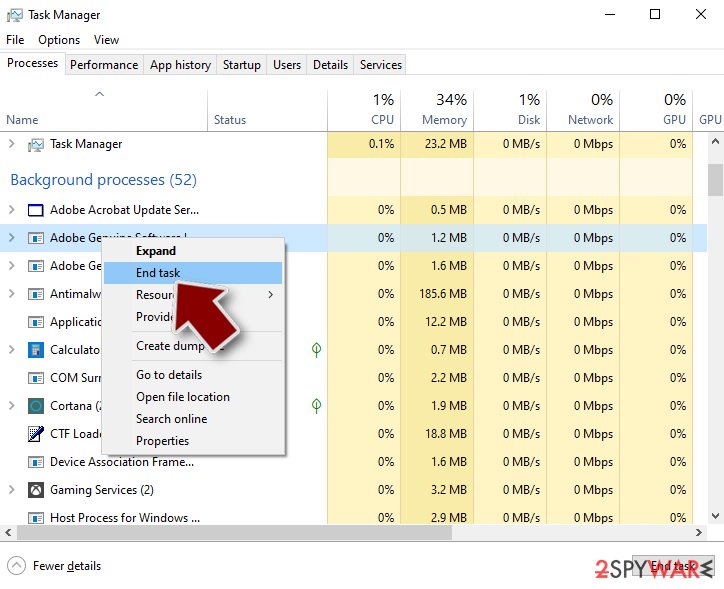
- Delete the contents of the malicious folder.
Step 3. Check program Startup
- Press Ctrl + Shift + Esc on your keyboard to open Windows Task Manager.
- Go to Startup tab.
- Right-click on the suspicious program and pick Disable.
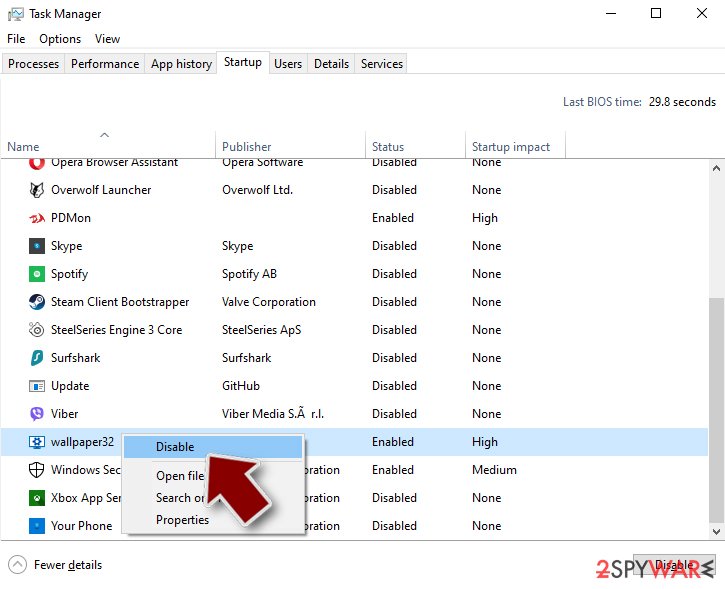
Step 4. Delete virus files
Malware-related files can be found in various places within your computer. Here are instructions that could help you find them:
- Type in Disk Cleanup in Windows search and press Enter.
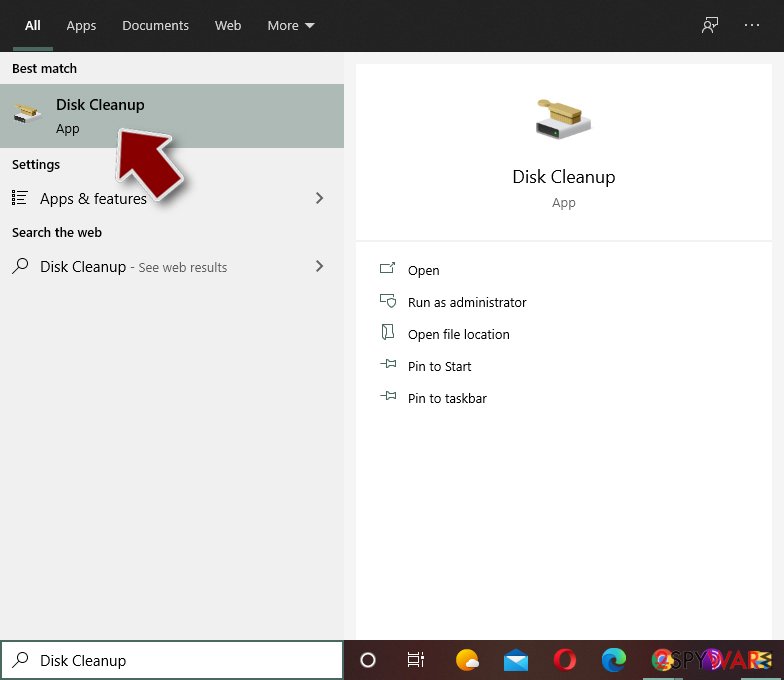
- Select the drive you want to clean (C: is your main drive by default and is likely to be the one that has malicious files in).
- Scroll through the Files to delete list and select the following:
Temporary Internet Files
Downloads
Recycle Bin
Temporary files - Pick Clean up system files.
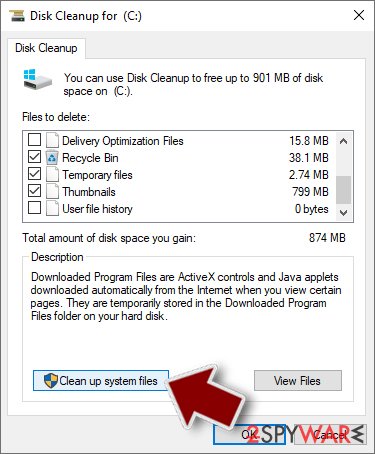
- You can also look for other malicious files hidden in the following folders (type these entries in Windows Search and press Enter):
%AppData%
%LocalAppData%
%ProgramData%
%WinDir%
After you are finished, reboot the PC in normal mode.
Remove Satyr using System Restore
You can also try to eliminate the threat using System Restore:
-
Step 1: Reboot your computer to Safe Mode with Command Prompt
Windows 7 / Vista / XP- Click Start → Shutdown → Restart → OK.
- When your computer becomes active, start pressing F8 multiple times until you see the Advanced Boot Options window.
-
Select Command Prompt from the list

Windows 10 / Windows 8- Press the Power button at the Windows login screen. Now press and hold Shift, which is on your keyboard, and click Restart..
- Now select Troubleshoot → Advanced options → Startup Settings and finally press Restart.
-
Once your computer becomes active, select Enable Safe Mode with Command Prompt in Startup Settings window.

-
Step 2: Restore your system files and settings
-
Once the Command Prompt window shows up, enter cd restore and click Enter.

-
Now type rstrui.exe and press Enter again..

-
When a new window shows up, click Next and select your restore point that is prior the infiltration of Satyr. After doing that, click Next.


-
Now click Yes to start system restore.

-
Once the Command Prompt window shows up, enter cd restore and click Enter.
Bonus: Recover your data
Guide which is presented above is supposed to help you remove Satyr from your computer. To recover your encrypted files, we recommend using a detailed guide prepared by 2-spyware.com security experts.Even if the ransom demand is relatively small, we do not believe that people should be robbed by cybercriminals at all. Therefore, do not agree to pay and rather try these alternative file recovery methods we provide below.
If your files are encrypted by Satyr, you can use several methods to restore them:
Data Recovery Pro might be used to get your files back
Data Recovery Pro is a tool that was created to restore damaged or accidentally deleted files. However, it is known to help users who's files have been affected by ransomware.
- Download Data Recovery Pro;
- Follow the steps of Data Recovery Setup and install the program on your computer;
- Launch it and scan your computer for files encrypted by Satyr ransomware;
- Restore them.
Try Windows Previous Versions feature
Windows Previous Versions feature can be only used when the System Restore function was enabled before the infection occurred.
- Find an encrypted file you need to restore and right-click on it;
- Select “Properties” and go to “Previous versions” tab;
- Here, check each of available copies of the file in “Folder versions”. You should select the version you want to recover and click “Restore”.
ShadowExplorer might be the savior
Some ransomware viruses fail to delete Shadow Volume copies within Windows OS. If that is the case, ShadowExplorer will help you.
- Download Shadow Explorer (http://shadowexplorer.com/);
- Follow a Shadow Explorer Setup Wizard and install this application on your computer;
- Launch the program and go through the drop down menu on the top left corner to select the disk of your encrypted data. Check what folders are there;
- Right-click on the folder you want to restore and select “Export”. You can also select where you want it to be stored.
Decryptor is not available yet
Finally, you should always think about the protection of crypto-ransomwares. In order to protect your computer from Satyr and other ransomwares, use a reputable anti-spyware, such as FortectIntego, SpyHunter 5Combo Cleaner or Malwarebytes
How to prevent from getting ransomware
Do not let government spy on you
The government has many issues in regards to tracking users' data and spying on citizens, so you should take this into consideration and learn more about shady information gathering practices. Avoid any unwanted government tracking or spying by going totally anonymous on the internet.
You can choose a different location when you go online and access any material you want without particular content restrictions. You can easily enjoy internet connection without any risks of being hacked by using Private Internet Access VPN.
Control the information that can be accessed by government any other unwanted party and surf online without being spied on. Even if you are not involved in illegal activities or trust your selection of services, platforms, be suspicious for your own security and take precautionary measures by using the VPN service.
Backup files for the later use, in case of the malware attack
Computer users can suffer from data losses due to cyber infections or their own faulty doings. Ransomware can encrypt and hold files hostage, while unforeseen power cuts might cause a loss of important documents. If you have proper up-to-date backups, you can easily recover after such an incident and get back to work. It is also equally important to update backups on a regular basis so that the newest information remains intact – you can set this process to be performed automatically.
When you have the previous version of every important document or project you can avoid frustration and breakdowns. It comes in handy when malware strikes out of nowhere. Use Data Recovery Pro for the data restoration process.
- ^ What is Advanced Encryption Standard (AES)? - Definition & Overview. Study.Online courses.
- ^ DieViren. DieViren. German cybersecurity experts.
- ^ Ronald 'Ron' J. Ellis. What is a macro-enabled document?. Quora. Question-and-answer site.







